Design Process
To create my vessels, I selected or created point-defining functions which I thought looked cool and used InterpCurves to connect the points. For my first vase I modified the triangle gear function from class and created a flower shape. I like the sort of flowing shape caused by sequential rotations of the curves in one direction. The second vase was created using the polygon function from class. It was fun playing with the number of sides per polygon and the rotations to move the ridge created by InterpCurve. The third vase I again modified the triangle gear function and created a sunburst shape. I originally planned to make this vessel a more complicated shape, but I just love how it resembles a cactus and chose to leave it as it was.
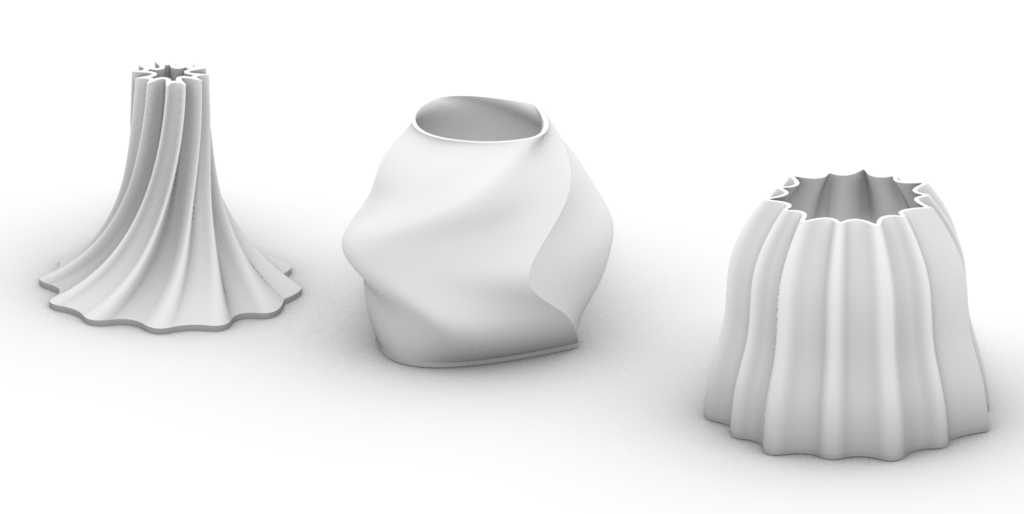
Printing
I only ran into a few minor issues during printing. For all of my vessels, there was some odd “bubbling” of the infill in the bases (see the image on the top row far right). I’m not sure why that happened. My best theory is that it may have to do with my choice of infill pattern (lightning). Whatever caused this, it doesn’t seem to have affected the stability of the vessels. Another issue is the top edge of the Flower Gear Vessel. Due to the design, I set the wall thickness to 2. I neglected, however, to set the wall thicknesses in Cura to sum to 2. As a result they aren’t perfectly bonded at the top. There were also some small globs on this vessel.
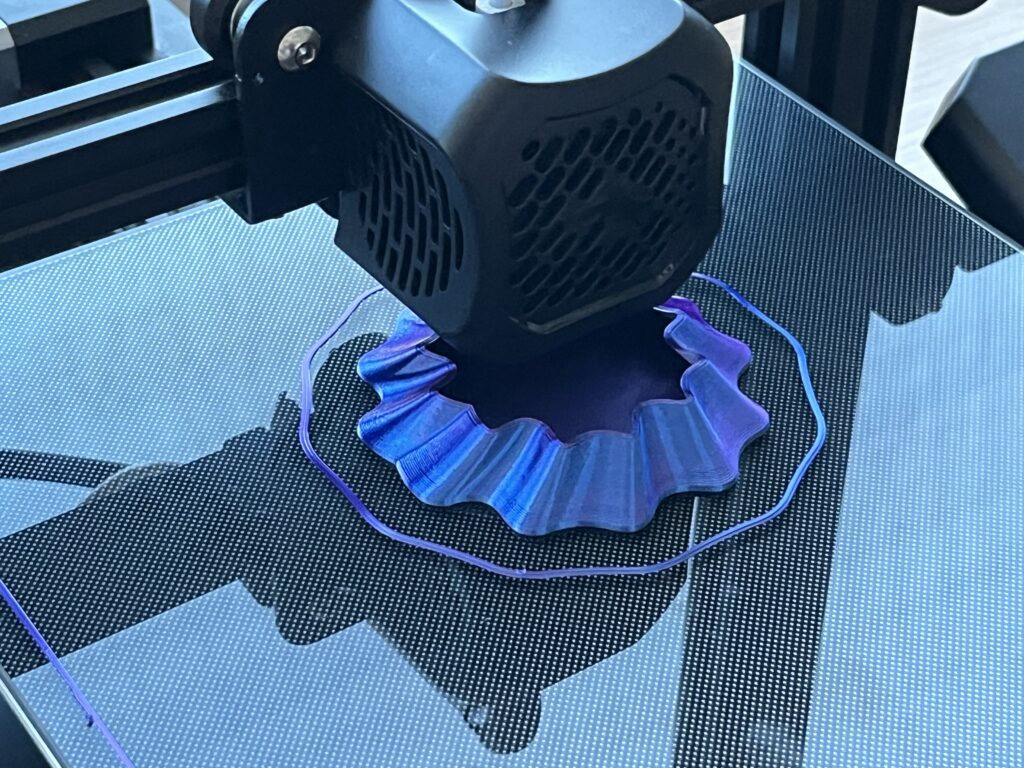
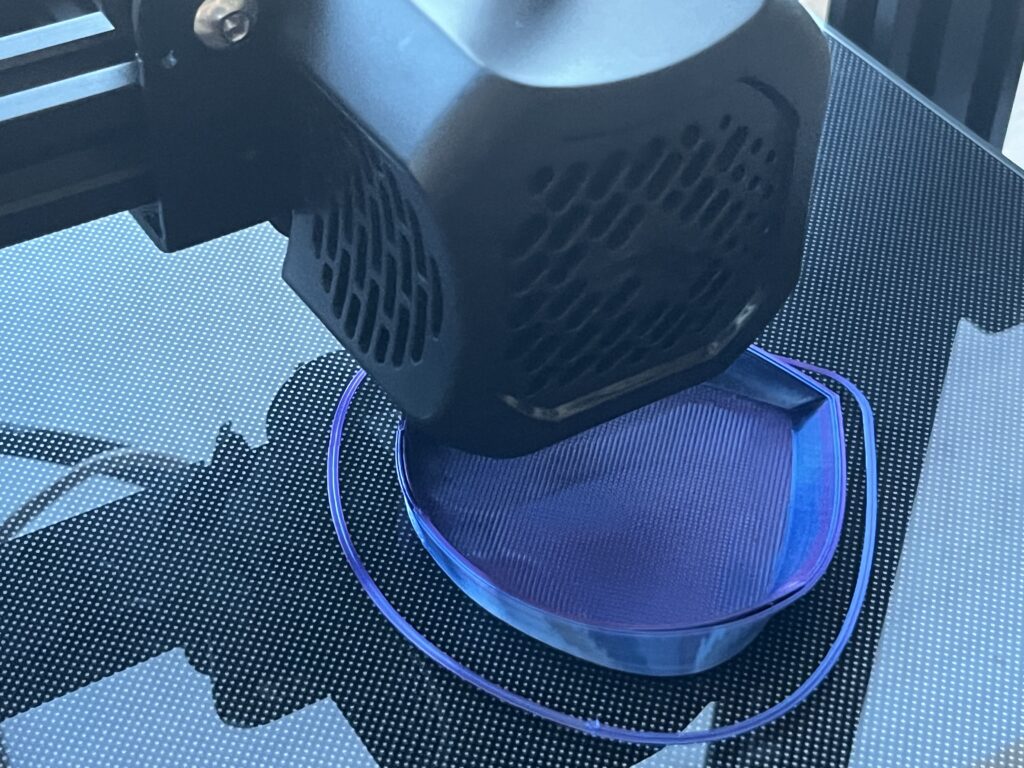
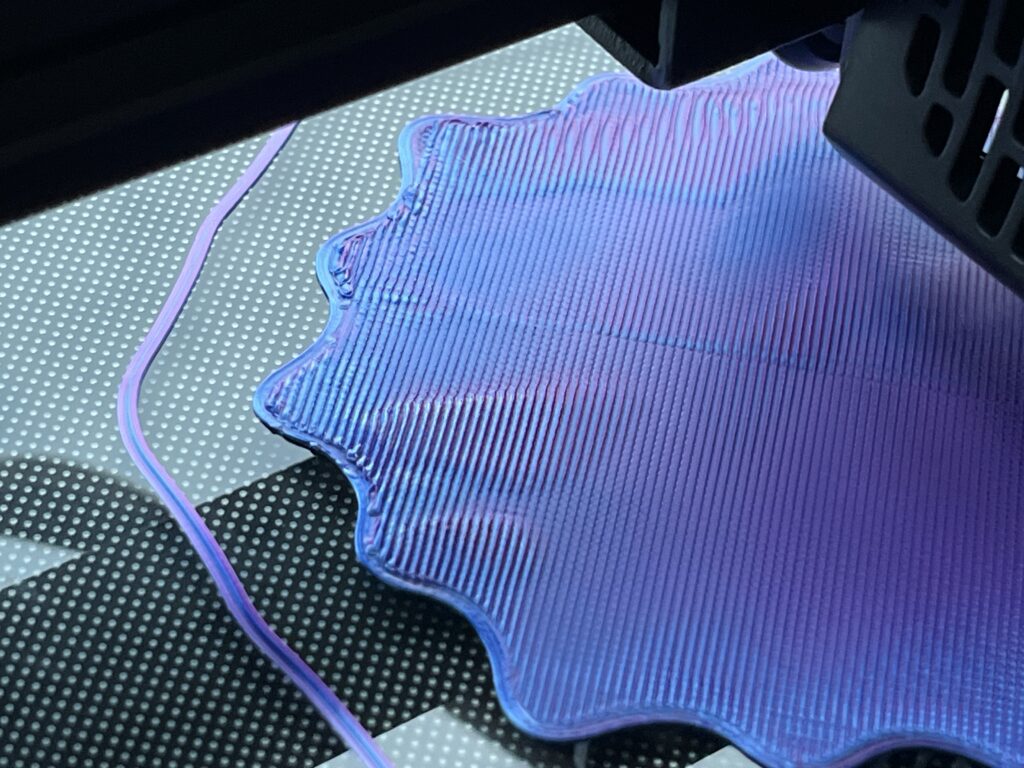
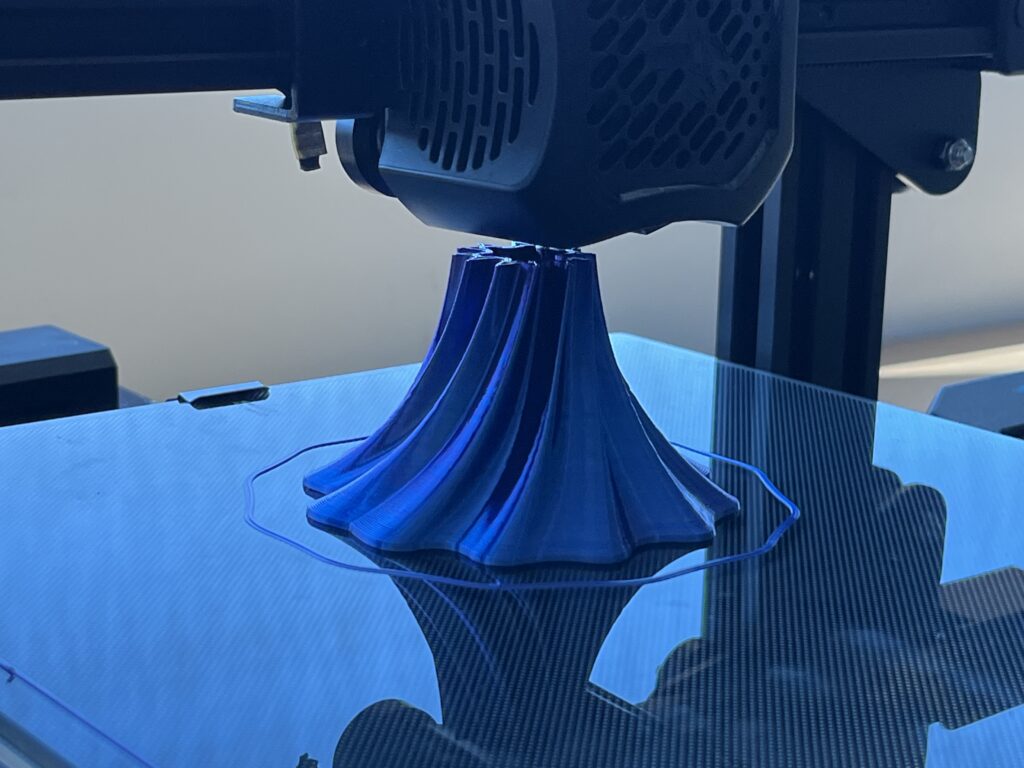
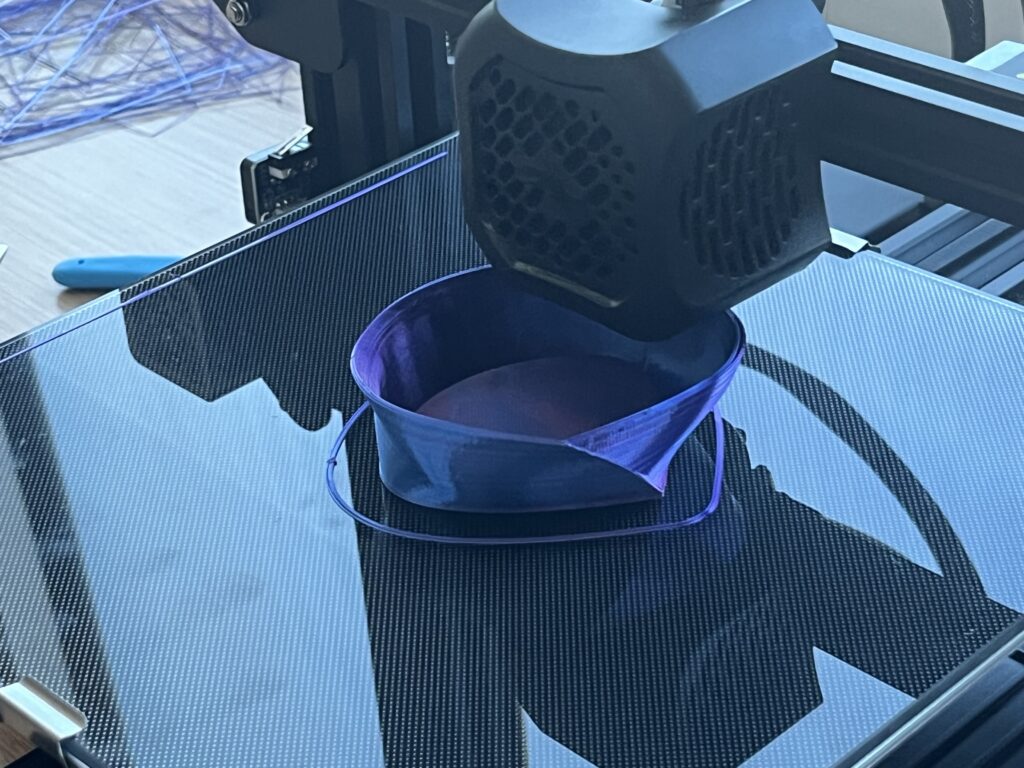
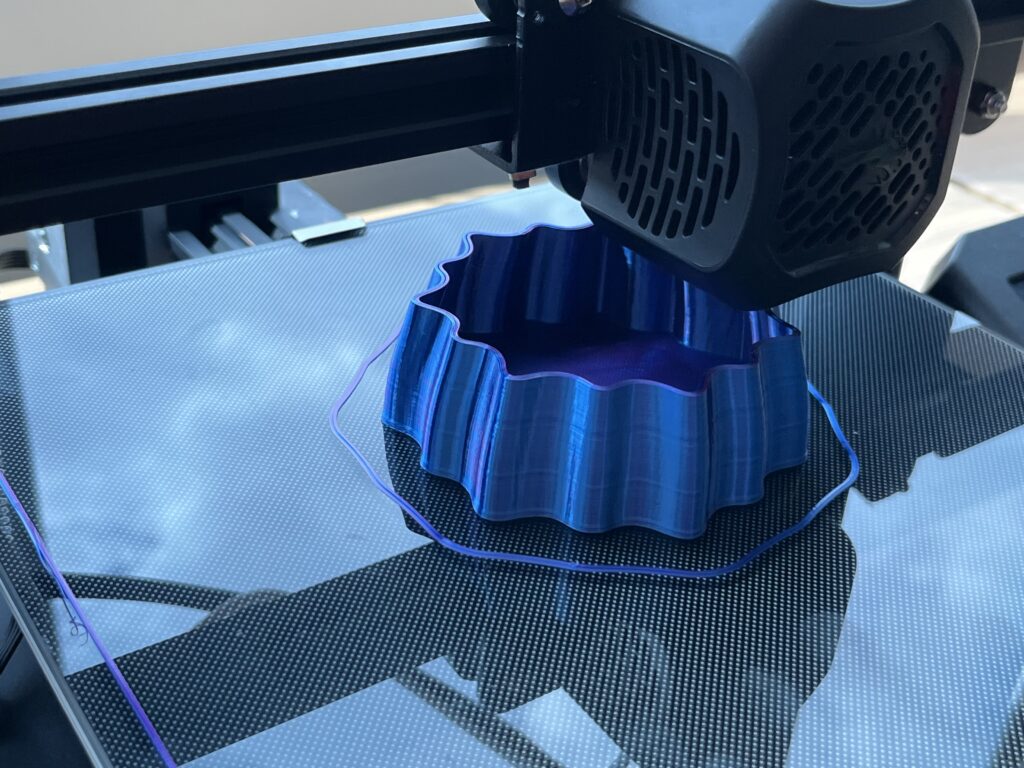
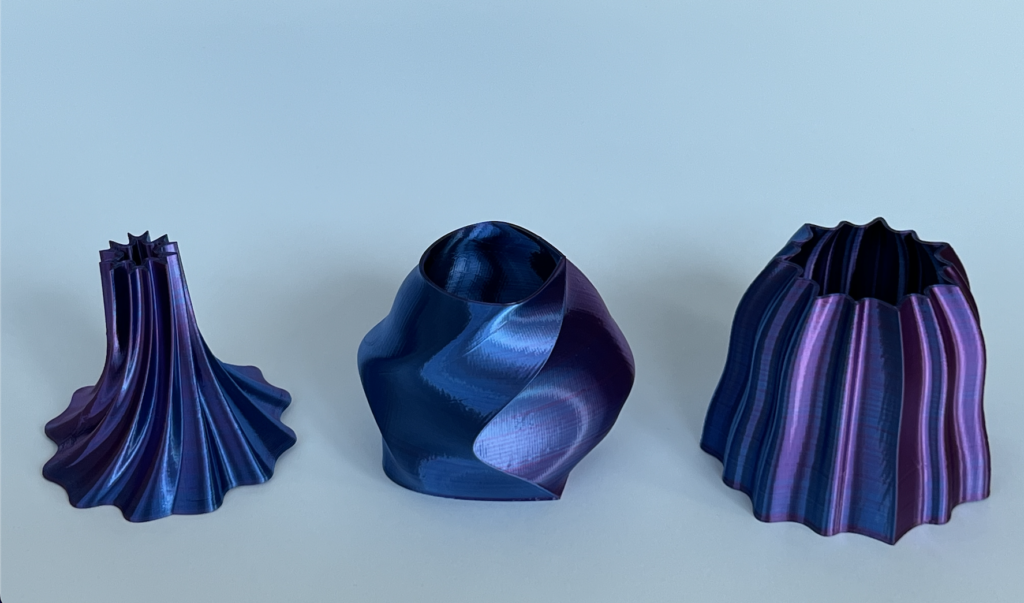
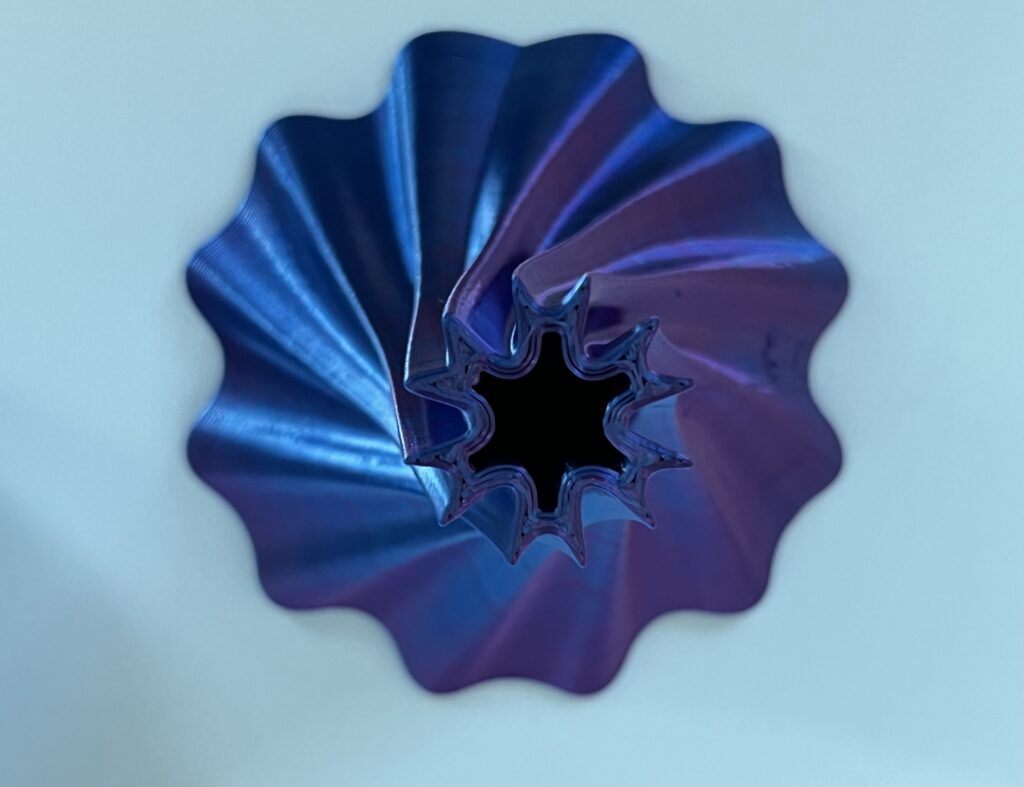
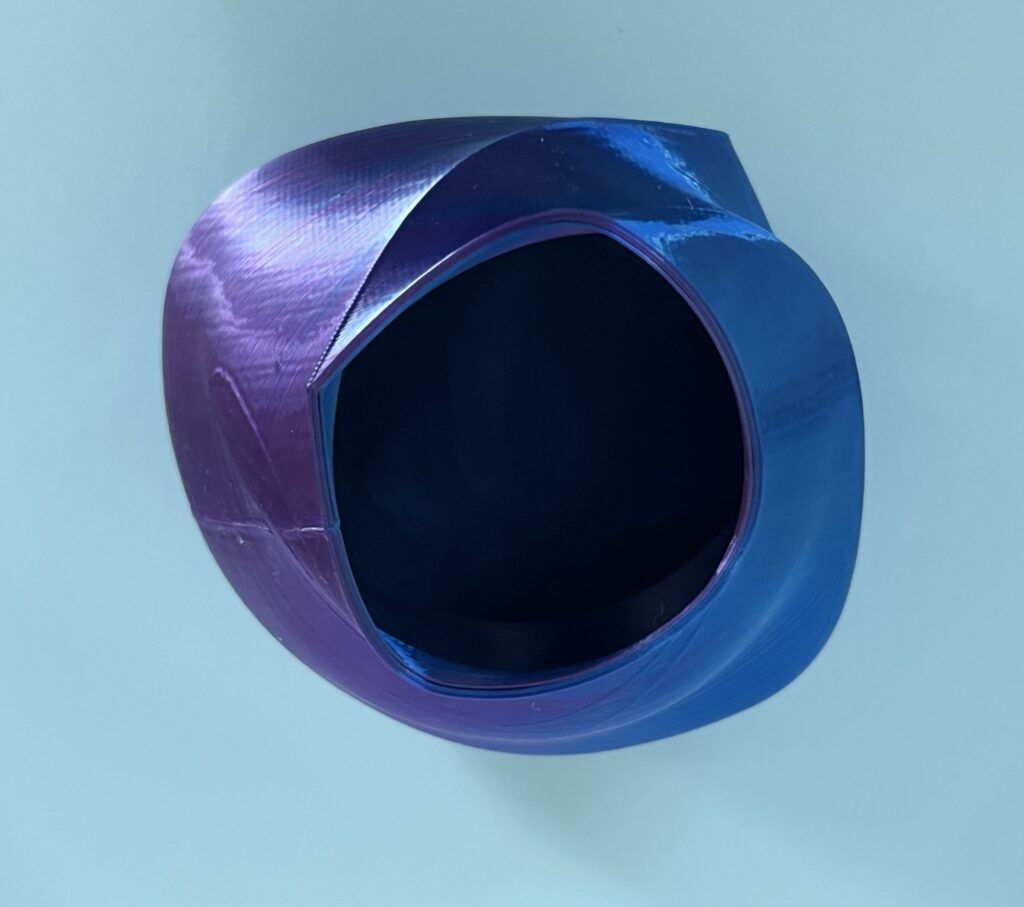
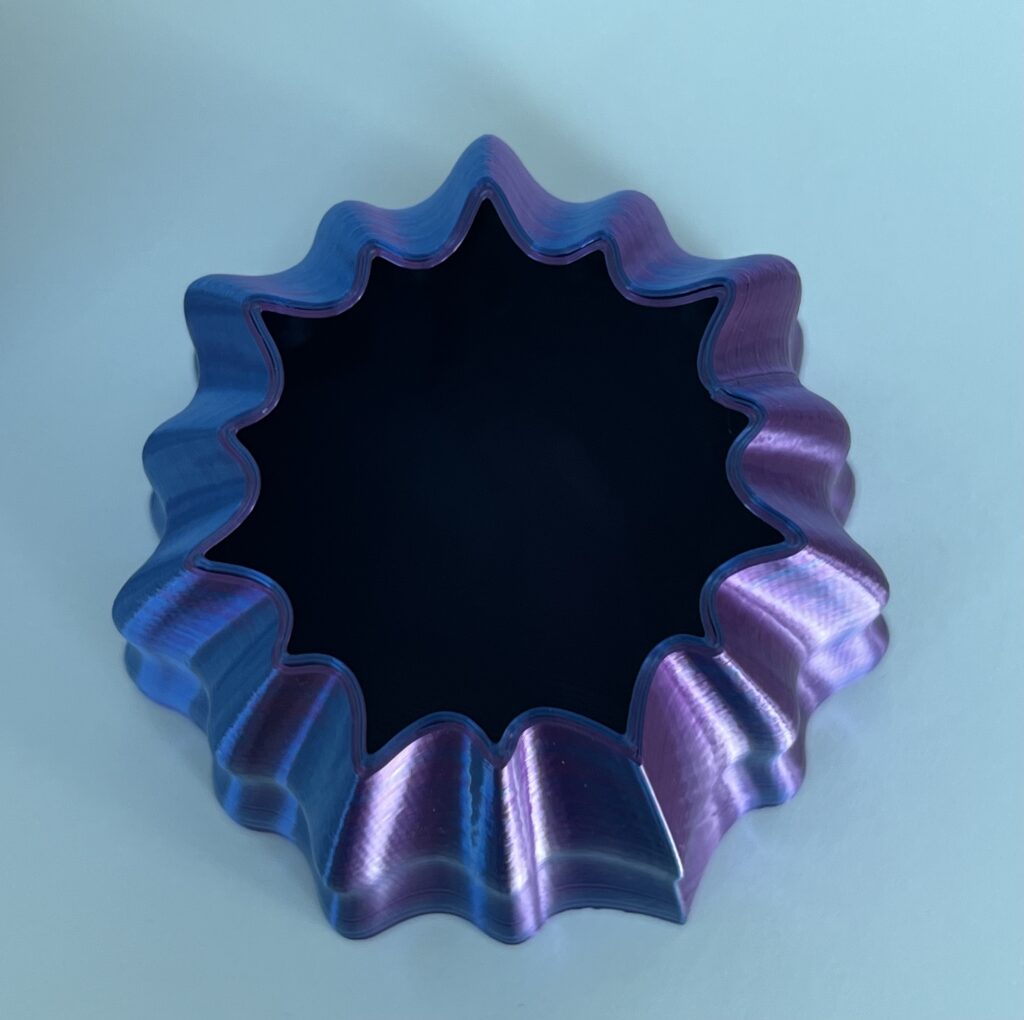
Reflections
Creating forms with code and 3D printing allows me to form smooth, mathematical shapes that I likely would not consider and definitely could not fabricate on my own. When using more traditional crafting processes, I feel it is more necessary to have at least an idea of the direction you want the piece to go in. With parametric design it was more of a surprise what forms could be generated with the same Grasshopper “machine”. One advantage is that once the code is constructed it doesn’t take long to generate diverse forms. A disadvantage is that it can be tricky to execute a specific idea. For example, I wanted to rotate some curves the way you can using the gumball – where the curve stays where it is and just tilts in the desired direction. However, RotationZYX moves the curve around the desired axis rather than tilting it in place, and I didn’t find a better function in the Grasshopper documentation. It’s entirely possible that I just missed the function I needed, but I wound up giving up on the idea.
I designed my forms by picking ones I liked. I played around with the triangleGear function given in class to create my flowerGear and sunburstGear functions. Technically this was a failure to code an idea I was going for, but I’m much happier with the resulting functions than the original idea. Aside from this attempt, I chose to mess around with the parameters and see what looked nice to me. My sense of authorship is different than it would be with traditional methods. It felt like I was discovering the shapes, rather than coming up with them myself from scratch.
I think one of the most creative/artistic aspects of using a parametric design process is to adapt to the forms that you are producing, and it seems like you were really embodying that rather than worrying about precise computational results. I also like the idea that you were discovering the shapes — that seems to reflect the innovation needed for a process like this. Each of your artifacts are very interesting, and they look like great prints!
Hi Sachi! Thanks! I did attempt some precise computational results but abandoned that approach pretty quickly. It was pretty freeing to just mess around and find what worked 🙂
Hey Liz!
Your designs turned out fantastic, and the filament you used added a really cool touch! Each of your vessels is unique, and it’s clear you put a lot of time and effort into them. I especially like the Flower Gear Vessel and The Cactus. I tried using a twisting technique on my designs but couldn’t quite get it right. How did you approach it?
I also ran into some challenges with wall thickness. I kept forgetting to adjust it in Cura, so I had to do a few reprints to meet the requirements. You did an amazing job, and I love how you embraced your creativity and let it guide your work—it really shows in your final prints!
Hi Andrei, thanks for your comments!
For the Flower Gear Vessel I wanted the piece to resemble the way fabric drapes and twists, so I made the twist pretty consistent and gradual. Specifically, from the bottom curve to the top curve, I set the twists to 0, 15, 30, 50, 60. I initially set the second-from-top curve to 45, but I didn’t like how it looked so I adjusted this one to 50. For the Polygon Vessel, my main interest with the twisting was to swish the pointed part around to create a sinuous ridge. Honestly there’s not much reasoning behind the values I chose, they just seemed like they would work well. If they didn’t, I adjusted them a bit. The values I settled on (from bottom to top) were 0, -24, -47, -15, 60.
Hope this helps!
Hi, Liz!
I really like the color of your printed object, what type of color is this?
In addition, I am very immersed in the atmosphere of shadows and light on the curved surfaces of your printed objects. It looks deep and mysterious. The combination of the color of the object and the distortion effect of the curved surface is great!
Hi Qinghong! Thanks for your comment!
The color is called Dual Color Blue Purple from the ELEGOO brand.
I purchased it here, but it looks like they might be sold out at the moment. It’s usually near the end of the list of colors. https://www.amazon.com/ELEGOO-Filament-Stronger-Dimensional-Accuracy/dp/B0CW1N6KW7/?th=1
The same color is currently available at this link. EDIT: It seems like ELEGOO may have just moved their silk, galaxy, and dual colors to this link. https://www.amazon.com/ELEGOO-Filament-Dimensional-Accuracy-Printers/dp/B0CHS8BQ6D/ref=sr_1_1?dib=eyJ2IjoiMSJ9.W0QiQHV7Hwp7fBuQ1nqyMiXETEN2Cw_WqcdGdsSV3qWDDEtDVVS5M1hwzBS7RP–i_ssM0g1Yz5Hw_lKIKOdSJThRP0cd-YPYVqa8U3e9cJOTc0IbT98kz7xQGdokslBTrosI2_I2b6X3YH7vOnw9b1iNmrEiz8aqfZjMDnr-9et7ntX2_NeiKp-MkpVkhCGKwYsLYDRJ0J5pXiOzlg6wzqcJDLnycLtt2_rBBWeY7w.OGIYe1WN9jjhUJvYCVWmvj7K7Ce87BZnfK-k607BnaM&dib_tag=se&keywords=ELEGOO%2BPLA%2Bdual%2Bblue%2Bpurple&qid=1727379496&sr=8-1&th=1